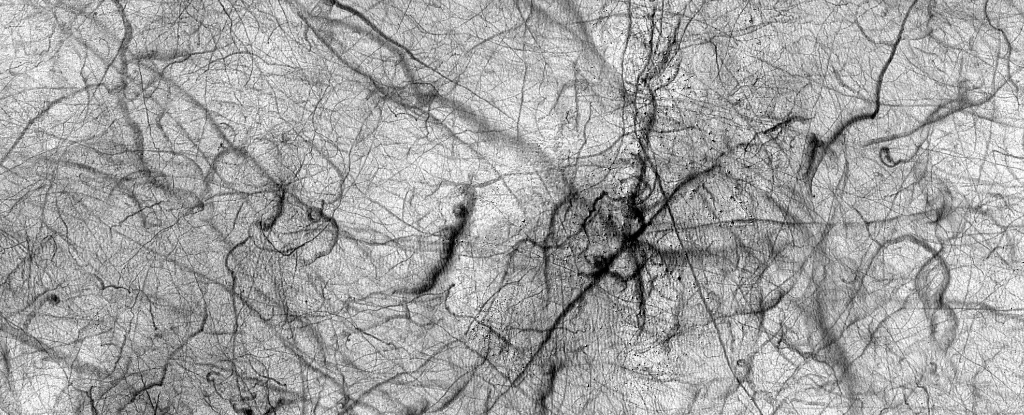In a stunning visualization of the Martian landscape, NASA’s HiRISE camera aboard the Mars Reconnaissance Orbiter has unveiled an astonishing image depicting the constant flurry of dust devils swirling across the surface of Mars. Captured in September 2022, this image showcases the Haldane Crater, where these remarkable whirlwinds leave indelible marks on the dusty terrain. Dust devils on Mars are more than just visual spectacles; they represent a critical aspect of the planet’s atmospheric dynamics and geological processes.
The formation of dust devils on Mars mirrors the mechanics seen with tornadoes on Earth. These phenomena arise when localized heating causes warm air to ascend rapidly. As this air rises, it creates a rotating column that draws in dust from the Martian surface, forming a visual display reminiscent of terrestrial whirlwinds. Depending on the intensity of the heating and environmental conditions, dust devils can vary greatly in size and lifespan, from diminutive twists of wind to massive spirals extending kilometers into the atmosphere.
One unique characteristic of Martian dust devils is their ability to transport materials over substantial distances, thus playing a role in the planet’s weather patterns and climate. Scientific observations of these atmospheric systems are pivotal for understanding the mechanisms that govern dust distribution across Mars.
The Importance of Dust Analysis
Scientists meticulously analyze the tracks left by these dust devils to ascertain the rate of dust accumulation on Mars. Each mark they leave serves as a data point that helps researchers evaluate the interaction between Martian atmospheric phenomena and the surface. This process directly impacts the interpretation of Mars’ climatic history and its potential for past habitability.
The Martian atmosphere, composed mainly of carbon dioxide, has a density that is a mere 1% of Earth’s. This sparse atmosphere, however, does not hinder the activity of dust devils. These whirlwinds play a double-edged role; they can hinder technological operations on the planet’s surface while also contributing to essential processes in dust distribution.
For the robotic explorers—rovers and landers monitoring the Martian environment—the presence of dust devils embodies both benefit and challenge. Dust can significantly impair the functionality of solar panels by obscuring sunlight, which is critical for energy generation. On the flip side, the powerful winds of larger dust devils can act as natural cleaners, removing accumulated dust and thereby restoring efficiency to the machinery that depends on solar energy.
Understanding the balance of these effects is crucial for planning future missions. Analyzing the dynamics of these dust devils allows engineers to design more resilient equipment that can withstand the Martian winds while maximizing operational efficiency.
Mars, often referred to as the “Red Planet” due to its iron oxide-rich soil, has a captivating geological history that suggests it once possessed liquid water and a thicker atmosphere—conditions that could have supported life. Geological formations such as Olympus Mons and Valles Marineris highlight the planet’s dynamic past. As we continue to unveil Mars’ secrets, the role of atmospheric phenomena like dust devils becomes ever more significant.
The study of these dust devils is integral not only for understanding Mars’ current geological and atmospheric state but also for safeguarding future exploratory missions. Insights gained from tracking these swirling masses of dust will inform strategies to protect technology and maximize the scientific yield from future endeavors to the Red Planet.
Mars’ dust devils are more than just captivating images; they provide a rich source of information regarding the planet’s atmospheric processes and surface interactions. As scientists continue to unravel the mysteries of Mars through advanced imagery and analysis, the patterns and behaviors of these whirlwinds will remain a focal point for understanding the complexities of the Martian environment, shaping our quest to explore and understand our neighboring planet. Each swirling column of dust encapsulates potential knowledge about the past and insights into the future of Mars exploration.


Leave a Reply